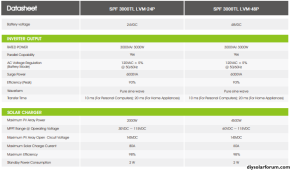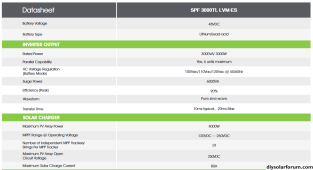Want to make sure I understand this correctly, as I want to minimize the trips my old arse has to be on the slick metal roof...lol
I'm doing an off-grid 30 X 50 storage building, using a Growatt 3000 48V inverter with 4 renogy 12V cells wired in series. No AC input. I have 4 VSUN455-144BMH Bifacial Panels, which are rated at 49V OCV / 41V Max @ 455Watts. My plan is to group the 4 panels by doing two groups of 2 panels in series, and then joining both of those groups in parallel. The cold start voltage on the Growatt is 46V, so I figure I will need to pair them to bring the voltage up and the wattage should be good as well. or am I missing something here?
I'm doing an off-grid 30 X 50 storage building, using a Growatt 3000 48V inverter with 4 renogy 12V cells wired in series. No AC input. I have 4 VSUN455-144BMH Bifacial Panels, which are rated at 49V OCV / 41V Max @ 455Watts. My plan is to group the 4 panels by doing two groups of 2 panels in series, and then joining both of those groups in parallel. The cold start voltage on the Growatt is 46V, so I figure I will need to pair them to bring the voltage up and the wattage should be good as well. or am I missing something here?





